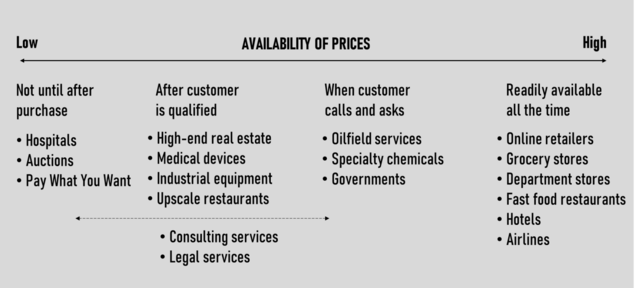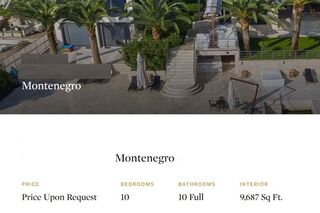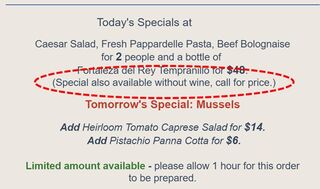Psychology
The Psychology of Withholding Prices
Withholding prices can serve four distinct purposes for the seller.
Posted September 6, 2021 Reviewed by Davia Sills
Key points
- Sellers withhold prices from customers to retain power in customer negotiations and over competitors.
- Having to call for prices increases the customer's commitment to the purchase.
- A 'Price available upon request' notice creates an aura of exclusivity and status.
- Selectively withholding prices pushes the consumer towards certain choices and away from others.
We may take the ready availability of prices for granted as consumers. When we buy something in a supermarket, on a website, or even big-ticket items like airline tickets or automobiles, we can access prices easily. However, this is not always the case.
In many business-to-business settings, prices are not provided in brochures, catalogs, or websites. You have to call a company’s sales rep and explain why you want the price and convince them you are a serious buyer. In many hospitals, patients never learn prices until they receive the bill after discharge. Real estate agents, art galleries, and even some restaurants (see below) routinely post “Call for prices” or “Prices available upon request” notices and withhold prices from easy access. See the figure below for the availability of prices across different industries.

There are many reasons why companies withhold prices from consumers. It allows the company to have an edge during customer negotiations and over competitors. In this post, I want to explore four psychological reasons why sellers withhold prices from customers.
1. Making the customer "call for price" raises their commitment to purchase.
For abstract items like artwork, buyers are often asked to inquire or call the seller for prices. In the example below, the art gallery sells limited edition prints of a renowned photographer.

It readily provides details such as print size, material, and edition size on its website but asks an interested buyer to call the gallery for information about prices and availability. This shrouding is not about gaining an edge over customers. It has a purely psychological motive, to increase the customer’s commitment by making them act. A small action, the inquiry, increases the chances of a larger action, the print’s purchase.
2. The "price available upon request" notice creates an aura of exclusivity and status.
The norm is to make prices easily available in real estate listings. One exception is high-priced luxury listings.

In the example shown, the interested buyer is informed that the price is only available upon request. In addition to vetting serious buyers, the notice serves a branding purpose. It signals that the property is high-priced and unique. When combined with the listing’s exclusivity, uniqueness, and prestige, the lack of price transparency may also indicate the value uncertainty in the seller’s mind. As real-estate developer Aaron Katz put it:
“Given its absolute rarity, we didn’t want to presume what a buyer would be willing to pay. We decided a better approach would be to reach out to a select group of agents and individuals around the world who would be interested… and allow them to come to us with what they feel it’s worth.”
3. Withholding prices selectively pushes the customer towards certain product offerings and away from others.
Consider the restaurant below that offers daily specials to its customers by email every day. Its daily special for two comes with a bottle of wine and costs $48. The same special is available without wine, but that price is selectively withheld. The customer is asked to call the restaurant for the price. Why?

The previously mentioned reasons don’t apply. Withholding price is not indicative of status or prestige, nor does it necessarily increase customer commitment to purchase; after all, only one price on the menu is withheld, while others are readily available. The reason is by providing complete information for one alternative—the daily special with wine, the restaurant is encouraging the customer to buy that option instead of taking the additional effortful steps of calling the restaurant to find out the “without wine” daily special price, then evaluate it, and finally decide whether to buy the with-wine or without-wine options. (Of course, this doesn’t apply to customers who don’t drink wine; they have no choice but to call.)
4. Consumers say they hate hidden prices but behave as if they love them.
Another variation that many companies use is to hide some portion of the price while making others available. For example, online booking sites divide the prices of event tickets by itemizing mandatory charges and fees and not providing them until close to purchase. This procedure, called price partitioning, provides another temptation to sellers: It’s often not in customers’ best interests, but it is too profitable to give up. To see why, consider this example from Michael Luca and Fiona Scott Morton:
“In 2015, StubHub set out to brand itself as a transparent ticket seller. Marketing materials promised: 'No surprise fees at checkout.' When searching for tickets, users would see the prices, including all fees, upfront to make it easier to search for tickets and know exactly what they’ll pay. However, the transparent approach turned out to be short lived.
StubHub ran an experiment in which they compared their transparent system to a system in which they showed the base ticket price on the main search page, and the full price only at checkout. StubHub users who weren’t shown fees until checkout spent about 21 percent more on tickets and were 14 percent more likely to complete a purchase compared with those who saw the total cost of a ticket upfront. The company dropped its transparent approach and went back to shrouded fees.”


